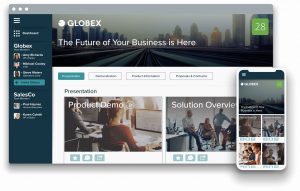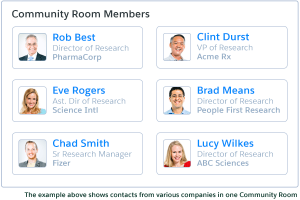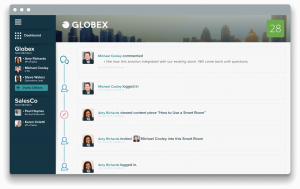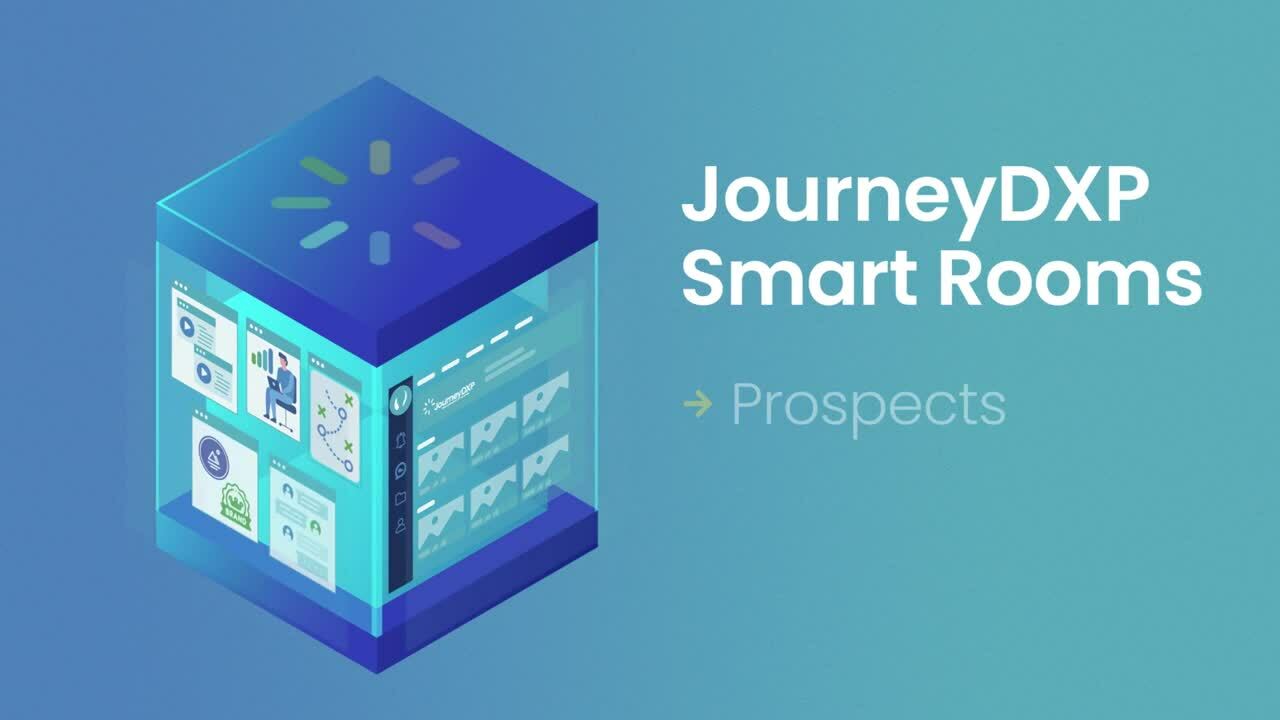Remember when you made a phone call and someone picked up and listened? Or when you sent an email and someone replied?
Me neither.
The truth is, only 19 percent of buyers want to connect with a salesperson during the early stages of a sales cycle. That means a vast majority of buyers (81 percent) don’t want to hop on a call or respond to emails, but for some reason, we keep doing more of the same.
Our development strategies are beneficial for sales teams, but not potential customers.

Customers would rather learn about problems and solutions on their own time through engagement and an experience that caters to them. They have new expectations for you and your team during the development stage of sales.
Below are 3 important customer expectations to address during sales development.
- Relevant content and messaging.
- Engagement from sales at the right time.
- A B2C-like digital experience.
That’s why we created Community Smart Rooms (Community Rooms for short), a sales development solution designed to consistently engage and educate the accounts and contacts you are targeting.

While Community Rooms assist sales teams in creating an amazing experience for their customers, they need to make the sales rep’s life easier too. With those expectations in mind, let’s take a look at some common sales problems that Community Rooms solve.
INCONSISTENTLY DEVELOPING ALL PROSPECTS & CUSTOMERS. Teams still have a tendency to miss target contacts or engage them infrequently when prospecting. This leaves untouched white space in the pipeline and causes a poor customer experience. In addition, sales teams need to do a better job prospecting to multiple contacts in the same account.
USING THE WRONG CONTENT AT THE WRONG TIME. During development, sales teams use too much marketing content that is designed to attract people to a brand, not educate them on the problems your solution solves. We’ve been sending broad and generic content to prospects because we don’t fully understand them and the problems they face at their company. When we do this and prospects view the collateral, it’s the beginning of a poor experience with your company because it’s not what they need.
NOT ENGAGING AT THE RIGHT TIME. One of the most difficult parts of development is understanding when to get salesy (aka when to deliver the sales pitch or try to schedule a meeting). SDRs typically do this when they see people visit their website, open emails, and view content. But that’s way too soon. Prospects have a threshold for education, but sales teams don’t fully understand what that is yet.
To recap, we’ve highlighted important customer expectations and addressed common sales problems. Now, the next question is how do Community Rooms fill in the blanks for each?
Community Rooms Engage Everyone
Community Rooms are designed for your customer and the experience they want, which is private and digital.
Your sales team creates a Room designed for similar contacts, whether it’s an ideal customer profile, industry-specific, or key accounts. Every contact is then added and invited to the room, which is private and accessible on any device. Now when they engage, everything feels personalized. The result is an environment they enjoy and want to explore.
(Note: Although we are adding contacts across multiple accounts into one Community Room, you have the option to hide them so they can’t see each other in the Room unless they’re from the same company.)
One of our customers is an advisory services firm for many niche clients across the life sciences industry. They’ve created Community Rooms to target contacts across industries that are interested in their research and advisory services. This allows them to easily engage and educate their entire client base on new and existing studies. As a result, their customers find value from collaborating with each other and learning from other industries.

Once you have Community Rooms set up for all your accounts and contacts, consistently engaging with them is easy.
You create one outbound message related to the audience and your update, including a content card that directs people into the Smart Room.
When ready, a sales rep or someone from your team only has to send that one message and it is delivered to everyone in the room. This makes outbound engagement to every prospect simple, quick and effective.
Community Rooms Engage with the Voice of the Customer
Remember how I just mentioned that Community Rooms are created for similar contacts?
That’s because we want to craft targeted messaging and fill the Room with content relative to all of them. But we’re not just talking about any content. We’re talking sales-level content that can’t be found on the web. We’re talking about content that tightly aligns with your prospects and their problems.
Furthermore, we have clients who add existing customers to their Community Rooms too. They then ask their customers to communicate in the Room with prospects, detailing their use of the solution and success to date. This has driven even more impact than a traditional case study because your prospects are hearing about results in real time. It’s not some case study or video from a client two years ago.
After all, who’s better to sell your solution than a successful customer?
Now, you have a medium to consistently engage EVERY SINGLE CONTACT you’re targeting, and deliver a message and content (and potentially social proof) that fully resonates with them.
This covers two-thirds of your customer’s expectations and your sales teams problems.
Community Rooms Engage with People Who Are Ready to Buy
If you want to know the right time to fully engage a prospect (aka make the pitch and schedule a meeting), you need to understand who, what content and how frequently they’re engaging.
With Engagement Analytics, you can do just that.
The analytics in Smart Rooms track all activity from the creation of the Room until it’s no longer in use. You can fully understand what content a prospect is looking at over time, how frequently they’re looking at it, and what they’re most interested in.

This allows you to perfectly tailor your introduction over the phone, talk about problems you know they’re facing, and recommend proper solutions.
We use Community Rooms internally at Journey Sales to develop our accounts, and one particular audience that we target are sales enablement executives. We’ve been running the program for a little over six months, and we’ve found four perfect times for our team to engage.
- If a prospect engages three weeks in a row. This signals to us that the problems we’re addressing strongly resonate and a call is in order.
- If a prospect engages once and then engages again around similar content one month later. This signals to us that the timing may not have been right at first, but now they’re ready for a discussion.
- If a prospect engages and is extremely active in the Room. This signals to us that they enjoy the Smart Room experience. That alone is enough of a reason for us to reach out.
- Lastly, believe it or not, we have many customers who reach out to us through Smart Rooms or email. There may be money in motion or they’re just interested in learning more. Either motivation is fine by us. ?
(Note: What makes this different than looking at web activity is that most site content is meant for marketing purposes, not sales. And we’re tactically planning our outreach on engagement, not because someone downloaded a whitepaper or E-book.)
MAKE IT EASIER TO SELF-EDUCATE… AND THEN BUY
With Community Rooms, you can create a digital customer experience that makes it easy for your customers to self-educate and gain interest in your solutions. This meets their expectations and solves common problems sales teams face.
But it doesn’t stop at development.
We use Smart Rooms throughout the remaining customer lifecycle too – sell and manage. And it’s nearly just as simple as Community Rooms.
If you’re interested in learning more about Community Rooms or Smart Rooms in general, feel free to request a demo. And if you have any questions, let’s connect.
POPULAR
Launching a Dynamic Digital-First Customer Experience
Growth will always be a top priority for B2B companies. If not, customers will inevitably outgrow your offering, and your company will become obsolete.
RELATED
How Do Account-based Marketing And Account-based Selling Work Together?
Account-based marketing and account-based selling. We’ve all heard of these concepts. They’ve been around for a while. Some of us in the B2B world use them. Some of us don’t (yet). One thing, however, is...




